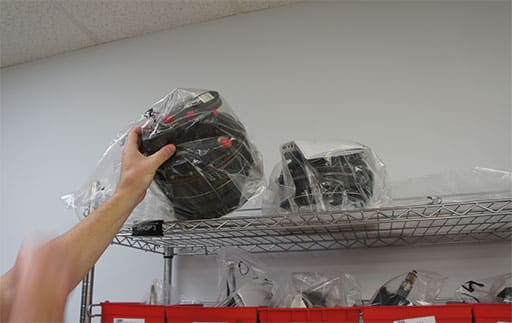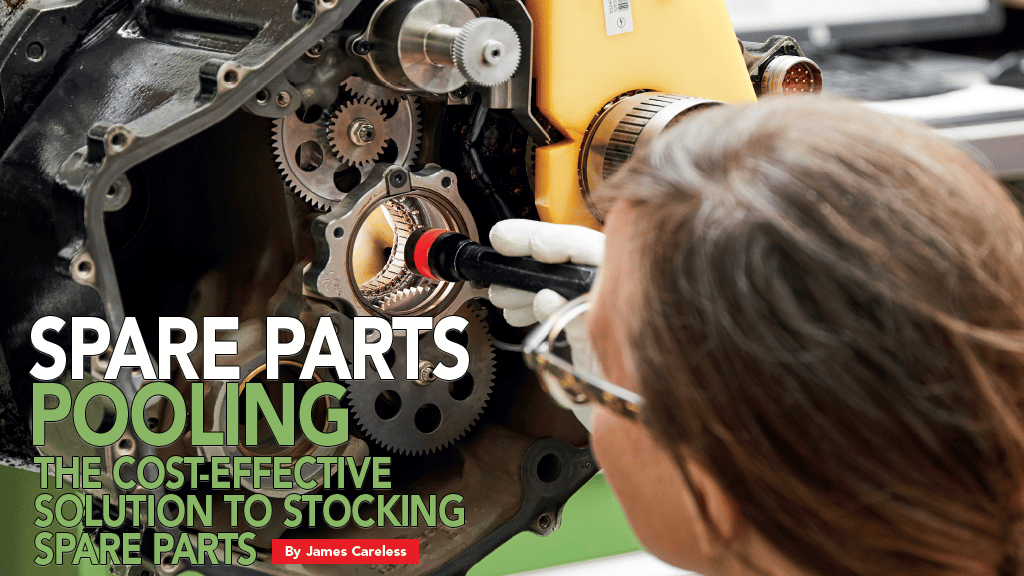An aircraft is a collection of parts all destined to be replaced, and the cost to airlines of stocking spare for those parts can run into the millions of dollars. This is why many airlines (and other commercial operators) take part in ‘spare parts pooling’, to reduce the expense of keeping everything they need in inventory without compromising their ability to repair aircraft as needed.
“Pooling allows airlines to have instant access to components for their aircraft for quick turnaround times, resulting in less Aircraft on Ground (AOG) time,” said Christopher Solomon, general manager of Certified Aviation Services, an independent MRO.
Parts Pooling Primer
The concept of spare parts pooling — aka aircraft component pooling or contracted components pooling — is as simple as it is brilliant.
“Parts pooling is simply stockpiling aircraft components in one central location that are needed by different operators, for the purpose of sharing the reduced cost while ensuring quality and availability,” said Mike Cazaz. He is CEO of Werner Aero, which is an asset management and aftermarket supplier of logistical solutions to airlines, MROs, and aircraft leasing companies. “You take a bunch of parts, put them in a centralized location for ease in logistics and you sign up airlines to utilize these parts on an as-needed basis, for a fee.”
In exchange for that fee, companies such as Werner Aero serve as the parts collector, warehouse and distribution center. “A ‘pool provider’ such as ourselves is responsible for maintaining the pool level and dispatching the parts to the airline,” Cazaz said. “Let’s say an airline needs a generator. If they’re under contract with us, we will send them a generator that is certified and ready to be installed in the aircraft. In exchange, the airline will send us the ‘bad unit’ from the aircraft. We will manage the repair/overhaul of that unit and ensure that it goes into our pool for someone else.”
When trouble occurs, the parts provider is ready to help. “In the case of an AOG (Aircraft on Ground), an airline identifies the faulty component and directly reports it to its contracted components pool provider, usually by a web suite, phone or by email,” said Tobias Heiling, head of product sales for aircraft component services with the major MRO, Lufthansa Technik. “The provider then quickly checks its pool inventory for serviceable components of the required type and immediately starts the required logistics process — including customs clearance — for delivering this identical, ‘fresh’ and serviceable component from one of its pools to the location of the customer aircraft. There, it is installed as quickly as possible in order to get the aircraft airborne again.”
The pool manager doesn’t have to be a third-party provider. In some instances, “Two or more airlines agree on a requirement of candidate part numbers to stock at a common station,” said Dean Wood, president/CEO of Aviation Concepts, a supplier of aircraft replacement parts and inventory management services. “Rather than each airline allocating its own identical set of assets to this station, which would cause multiple sets of the same costly assets to be tied up, they agree that one airline will be the ‘Pool Provider’ at this station and the others will join the Pool Agreement, and share in the parts as needed.”
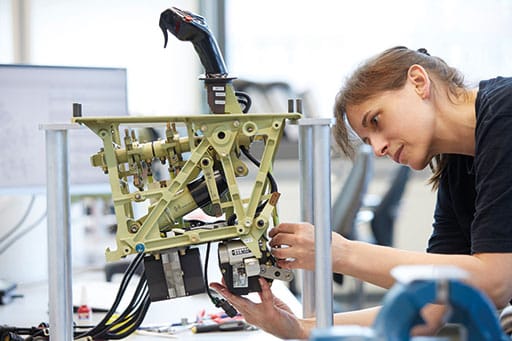
Lufthansa Technik is also a spare parts provider, and a very big one at that. “We operate one of the largest aircraft component pools in the world, with currently 2.3 billion U.S. dollars’ worth of components in our 15 worldwide component stocks on three continents,” Heiling said. “Sophisticated and flexible transport solutions provided through our own global logistics provider, Lufthansa Technik Logistik Services (LTLS), ensure that every component needed reaches our customers’ aircraft in the shortest possible time, if necessary even by an onboard courier booked on the next available flight. We moreover employ a dedicated AOG support team that is available 24/7 in order to provide assistance to our customers from the incoming call until their aircraft is finally back in the air.”
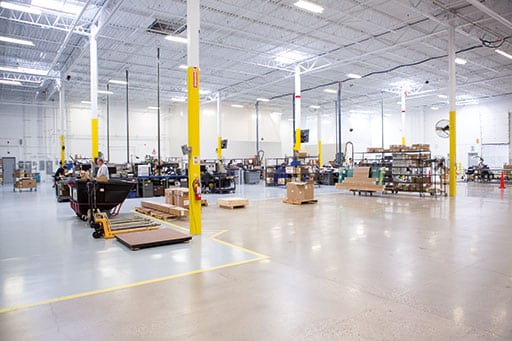
AAR Corporation (AAR) is another global MRO that manages a large spare parts pool that is linked to aircraft servicing, supporting about a thousand aircraft on average every day. “In its simplest form, airlines enter into long-term support agreements with pool and repair providers like AAR and the pool support comes bundled with a repair-by-the-hour arrangement,” said Chris Feddes, AAR’s senior vice president of commercial programs. This being said, the process is the same: “By entering into that arrangement an airline is effectively agreeing to use components that have operated on other airlines’ aircraft,” Feddes said. “They give you the unserviceable part, you repair it, put it back on your shelf, and ‘rinse and repeat’ that process a few thousand times a year for every customer.”
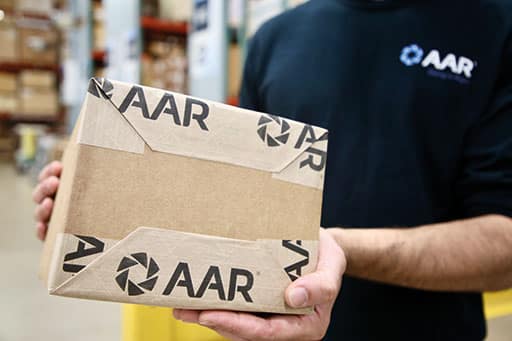
The Many Benefits of Parts Pooling
The practice of spare parts pooling offers a range of benefits to airlines and other aircraft operators.
“The first benefit is no capital expenditure on parts,” said Cazaz. “You don’t spend any money upfront. Someone has spent the money; belonging to the pool just costs you whatever the monthly fees are.”
Paying a known monthly fee rather than buying parts and storing parts directly, which can be an unpredictable expense in AOG situations, is the second big bonus. “Given that the monthly pool fee is fixed, airlines can better predict their operating costs,” Cazaz said. “And when you don’t have to spend money owning a large parts inventory, you can improve your cash flow as an airline.”
“Probably the single biggest thing they get is fixed predictable costs of component maintenance and pool access so they get typically a rate per hour for repair and a cost per month per aircraft, or maybe a rate per hour for pool access,” Feddes said. “So they have a high degree of certainty about what their costs are going to be every period. They typically realize lower long-term costs. By participating in a pool the operator benefits from the lower investment per aircraft that is needed to support a large fleet than you would get if you had a smaller fleet. You had to buy all of your own parts.”
This level of predictability makes it easier for airlines to plan and manage their maintenance budgets for the long-term, which is no small deal in an industry that is plagued by economic uncertainties; the most recent being COVID-19. This is why “Pooling is an integral part of many airlines’ asset management decisions,” said Wood. “There are many capital investments which can be avoided thanks to pooling, plus specific situations where airlines should not simply buy spares outright and add them to already inflated inventories. Pooling also controls today’s out-of-pocket expenses, does not directly affect the purchasing budget and takes many years to amortize or realize the full outright cost expenditure of parts (compared to buying and warehousing them outright).”
The fourth major benefit of parts pooling — and it could be argued that this one should be closer to the top of the list — is that pool providers have to manage the supply chain issues associated with finding, stocking, shipping and repairing parts, rather than the airlines themselves. Given the continuing chaos affecting the world’s supply chain in the wake of COVID, this is no small thing.
“As a pool provider, we manage the risk of the supply chain itself,” said Cazaz. “So if we guarantee turnaround time and there’s a problem with the supply chain, it’s up to us to perform for sure. The airline can count on the delivery time. If we guarantee that a part will be dispatched within 48 hours, they know that they don’t have to worry.”
“The risk of having the right component delivered to the right place at the right time is shifted from the airline to the supplier,” Heiling agreed. At the same time, a large spare parts pooling provider such as Lufthansa Technik can achieve “significant economies of scale by bundling the material stocks for numerous customers in a respective region.”
The Price of Admission
Clearly, spare parts pooling is a very smart move for cost-conscious airlines; that is to say all of them. Still, it does cost to join. So what is the actual price tag?
At Werner Aero, “the way it works is — in order to guarantee what we call a Service Performance Level — an airline has to sign up for a minimum of three years and pay a monthly fee to access the pool,” said Cazaz. “The fee is based on two main factors. The first is ‘how many parts am I guaranteeing the airlines per month?’ because this varies from customer to customer. The second is what we call ‘dispatch reliability’: what percentage of reliability, like 90% or 95%, do we have to guarantee dispatch of the parts within an agreed-upon window of time. Some airlines will say, ‘I’m okay with 90%,’ because the rate for 90% will be a bit cheaper than 95%.”
According to Aviation Concept’s Dean Wood, there are several parts pooling payment options to choose from. The longest-standing, most successful model is offered by “the International Airlines Technical Pool (IATP) with its 75-year history,” he said. “The IATP has a simplified process, contract and price structure for its member airlines to use. Basically the annual pool cost is 18% per year of the member-agreed pool value of the part(s). “This pool fee is split between the provider and sharers, so a pool being shared by three airlines only costs 6% per year for the airline to have access to the part, enabling it to avoid a potential AOG, flight delay or cancellation at that station.”
For airlines running on tight budgets, the temptation may exist to avoid the monthly fees of parts pooling by going it alone — ‘getting by’ using a minimal in-house parts inventory and buying what they need when an AOG occurs, with the accompanying amount of prayer required during the current chaotic supply chain situation. But succumbing to this temptation is just not worth the risk: in exchange for their monthly parts pooling fee, “the operator takes no long-term asset value risk on all that inventory. The pool provider takes that,” said Feddes. As well, “they wind up a significantly less complex supplier management operation. Typically, they’re managing just one supplier versus potentially hundreds, so they’ve really outsourced to the repair provider all of their repair cycle management obligations.”
In other words, there is a price of admission to belong to a parts pool. But the price of admission is worth it.
Here To Stay
One thing seems certain in the very uncertain world of aviation: the cost savings, supply guarantees and rapid AOG resolutions provided by spare parts pooling means that this approach to parts management is here to stay.
“At this point, I think pooling is now a permanent fixture of our industry,” Feddes said. “For most carriers, it’s proven itself to be the best way to provide component support to their fleets.”
“Parts pooling has been in the aviation industry for over 40 years,” noted Solomon.”Due to its convenience, we expect this aspect of the industry to continue to grow rapidly.”
A case in point: at Lufthansa Technik, “Total Component Support (TCS) is definitely among the most popular products in our portfolio,” Heiling said. “Today, we are supporting more than 140 airlines on almost all continents with these kinds of services. As many of our customers are seeking flexibility in recovering from the COVID crisis, while still keeping an eye on their cash situation, we expect the popularity of this product to gain further momentum.”
The popularity of this approach is now being driven by digitalization,” he added. “Data-driven digital maintenance platforms such as our AVIATAR can leverage significant benefits for component support offerings. On the one hand, their data analysis capabilities enable services such as Predictive Maintenance, thereby ‘detecting’ parts failures before they occur and initiating timely replacements. On the other hand, these prediction capabilities can also positively impact the parts pools by connecting automated stock optimizations and thus further cost reduction.”
Meanwhile, IATP maintains more than 7000 active parts pools,” said Wood. “The number of pools and items staged is fluid, as seasonal changes of stations served and fleet types fluctuate regularly, so do the spare parts requirements.” Intriguingly, the introduction of the newest generation of long-haul aircraft (i.e., the Airbus A350 and Boeing 787) into airline service is actually reducing the availability of spare parts for pools “due to the heavy reliance on Power-by-Hour (PBH) programs and OEM Gold Care programs for these fleets,” he said. “This tends to leave the airlines owning far less inventory of their own to provide for pooling. [Still], Opportunity does exist here for other suppliers to enter this space and establish pools to support airlines for items not covered or not covered well enough by their current PBH contracts.”
The bottom line: spare parts pooling is good for commercial aircraft operators, the MROs and pool providers who serve them, and the passengers who rely on them. It’s not often that a true ’win-win-win’ business case occurs these days, but this is one of them.
